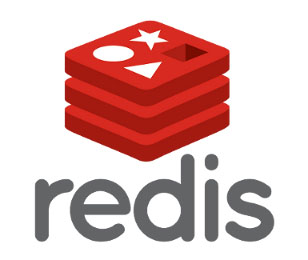
In this tutorial, we will show you how to install Redis on CentOS 6. For those of you who didn’t know, Redis is an open-source, BSD licensed, advanced key-value store. It is often referred to as a data structure server since keys can contain strings, hashes, lists, sets, and sorted sets. Redis also supports data types such as Transitions, Publish and Subscribe. ‘Redis ’ is considered more powerful than ‘Memcache’. It would be smart to bring ‘Redis’ into practice and put ‘Memcache’ down for a while.
This article assumes you have at least basic knowledge of Linux, know how to use the shell, and most importantly, you host your site on your own VPS. The installation is quite simple. I will show you the step-by-step installation of Redis on CentOS 6.
Prerequisites
- A server running one of the following operating systems: CentOS 6.
- It’s recommended that you use a fresh OS install to prevent any potential issues.
- SSH access to the server (or just open Terminal if you’re on a desktop).
- A
non-root sudo useror access to theroot user. We recommend acting as anon-root sudo user, however, as you can harm your system if you’re not careful when acting as the root.
Install Redis on CentOS 6
Step 1. First, you need to enable the EPEL repository on your system.
## RHEL/CentOS 6 64-Bit ## # wget http://download.fedoraproject.org/pub/epel/6/x86_64/epel-release-6-8.noarch.rpm # rpm -ivh epel-release-6-8.noarch.rpm ## RHEL/CentOS 6 32-Bit ## # wget http://download.fedoraproject.org/pub/epel/6/i386/epel-release-6-8.noarch.rpm # rpm -ivh epel-release-6-8.noarch.rpm
Step 2. Install Redis with Yum.
yum -y update yum install redis php-pecl-redis
Enable Redis service to start on boot:
service redis start chkconfig redis on
Check if Redis is Running:
### chkconfig –list redis redis 0:off 1:off 2:on 3:on 4:on 5:on 6:off
To make sure Redis is working, run the command “redis-cli ping” from the command line. If you get the result “PONG”, that shows Redis is working.
Step 3. Install Redis PHP extension.
After we have Redis installed we will need the PHP-REDIS extension. Using the following command:
pecl install redis
Now open php.ini file and add the following line to it:
### nano /etc/php.ini extension=redis.so
Now restart Apache to apply the changes to php.ini file:
service httpd restart
Step 4. Install web interface for Redis.
phpRedisAdmin is a simple web interface to manage Redis databases:
git clone https://github.com/ErikDubbelboer/phpRedisAdmin.git cd phpRedisAdmin/includes cp config.sample.inc.php config.inc.php
Make sure the setting are correct:
nano config.inc.php
Let’s add the RedisAdmin configuration file to Apache:
### nano /etc/httpd/conf.d/redisadmin.conf ### Now add the following ### # # Web Interface for RedisAdmin # <Directory "/downloads/phpRedisAdmin/"> Order Deny,Allow Deny from all Allow from 127.0.0.1 Allow from <your ipaddress> </Directory> Alias /redisAdmin /downloads/phpRedisAdmin Alias /redisadmin /downloads/phpRedisAdmin
Create a Bash Script to make sure Redis is running:
### nano /scripts/redis-check.sh
#!/bin/bash
PS=$(which ps)
GREP=$(which grep)
WHEN=$(date +"%Y-%m-%d-%H:%M:%S")
if ! $PS aux | $GREP "redis.conf" | $GREP -v grep 2>&1 > /dev/null; then
/etc/init.d/redis restart
echo 'Restarted Redis @' $WHEN
fi
#Check Second instance
if ! $PS aux | $GREP "redis2.conf" | $GREP -v grep 2>&1 > /dev/null; then
/etc/init.d/redis2 restart
echo 'Restarted Redis2 @' $WHEN
fi
Make the Script executable:
chmod +x /scripts/redis-check.sh
Add your script to your cron to run every 3 minutes or so:
### nano /var/spool/cron/root */3 * * * * /bin/bash /script/redis-check.sh >> /var/log/redis-check.log
Congratulations! You have successfully installed Redis. Thanks for using this tutorial for installing the Redis server on CentOS 6 system. For additional help or useful information, we recommend you check the official Redis website.